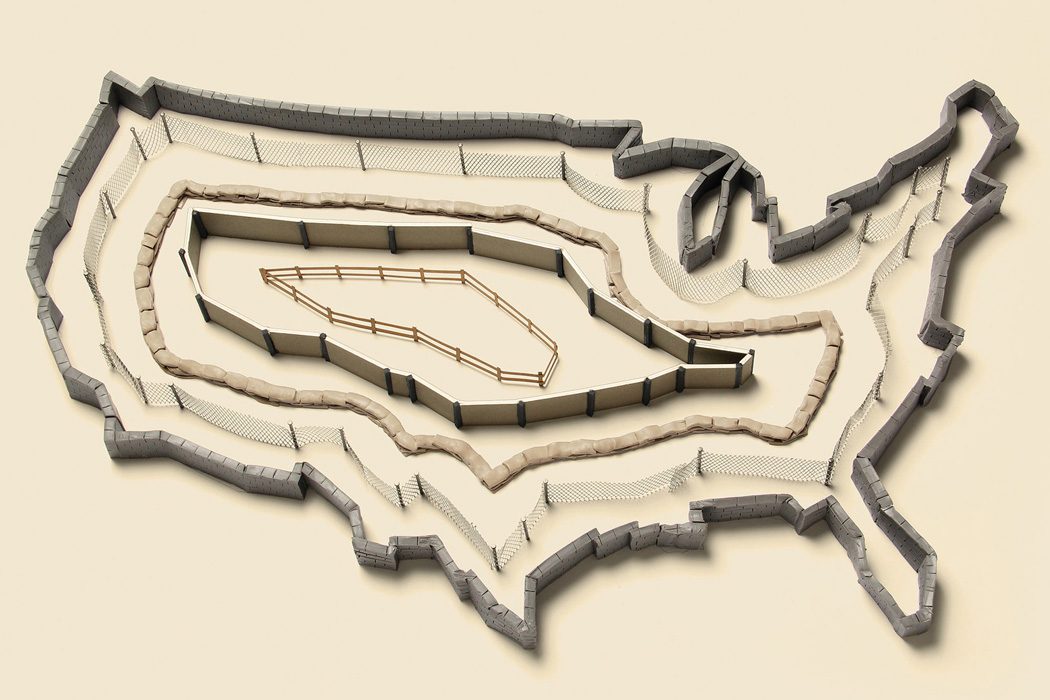Borders mark the contours of nations, states, even cities, defining them by separating them from all others. A border can be natural—an ocean, a river, a chain of mountains—or it can be artificial, splitting a homogeneous landscape into two. Often it is highly literal, announcing itself in the shape of a concrete wall, a sand berm, a tall fence topped with barbed wire. But whatever form it takes, a border always conveys meaning.
Laila Lalami in the New York Times Magazine
Just in time for the Borders & Boundaries issue of Topology, the New York Times Magazine’s First Words column is a reflection on the nature of borders. Did you know that two-thirds of the U.S. population lives within territory that is officially considered our “border-zone,” which is any land within 100 miles of a national boundary? “In this in-between space,” writes Lalami, “rights we take for granted disappear. At point of entry to the United States, nobody—not even American citizens or permanent residents—is fully protected by the Fourth Amendment, which safeguards against unreasonable searches and seizures.” The full essay is well worth a read.




